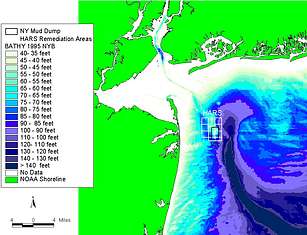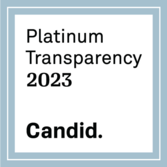Historic Area Remediation Site (HARS)
On September 1, 1997, the Historic Area Remediation Site (HARS), located in the New York Bight Apex, was designated under the Marine Protection, Research, and Sanctuaries Act as an ocean remediation site.
The HARS is a 15-square nautical mile benthic area that was concluded by the EPA to be contaminated (USEPA, 1997b). It surrounds the original Mud Dump Site, where contaminated dredged sediments from NY/NJ Harbor were dumped for decades. The dumping caused mounds of sediments in the  ocean area, forming new benthic habitat typically of fine particle silts and clays. This not only modified the benthic community type because of sediment particle size, but also because these fine grained harbor sediments were highly contaminated.
ocean area, forming new benthic habitat typically of fine particle silts and clays. This not only modified the benthic community type because of sediment particle size, but also because these fine grained harbor sediments were highly contaminated.
The original Mud Dump site was 2-square nautical miles and the resulting remediation site (HARS) is nearly 15-square nautical miles. Baseline surveys of the HARS prior to its designation showed that sediment contamination was high, with possible negative biological effects (USEPA, 1997b). In particular, multiple contaminant levels exceeded sediment quality guidelines, sediments were acutely toxic to shrimp-like amphipods, and infaunal worms were accumulating high levels of specific contaminants from the sediments. Contaminants accumulating in the food chain were PAHs, PCBs, and 2,3,7,8-TCDD dioxin.
The HARS example illustrates the fact that once sediments are contaminated, results are system-wide and not limited to the seafloor benthic environment. Processes of bioaccumulation and trophic transfer through the food chain distribute contaminants to the entire marine system. The benthos is the beginning of this chain, bringing contamination in concentrated forms to species higher in the food chain.
In the NY Bight Apex, area lobsters were and still are contaminated with PCBs and 2,3,7,8-TCDD (dioxin). The HARS area is one culprit for this contamination. According to NOAA (1996, as cited in USEPA, 1997b), total PCB (å18PCB) concentrations in muscle and hepatic tissue were elevated in lobsters from three sampling areas closest to the historical mud dump site (now within the HARS area) in comparison to the Hudson Shelf Valley, and this spatial trend was consistent over time. Concentrations ranged from 1.8 to 7.4 ppm (wet weight) in the hepatic tissue (NOAA, 1996 as cited in USEPA, 1997).
The HARS is now being capped with dredged sediments from New York/New Jersey Harbor. This cap material is termed "Material for Remediation." Since its designation and the beginning of the capping process, there has been considerable debate over standards for the cap material. In fact, no new standards were developed for the purposes of remediating the site except for PCB's (in October 2000, the EPA and Army Corps implemented an updated PCB guideline).
As of May 2002, standards are being developed through a lengthy peer review process. Meanwhile, sediments are being dumped at the HARS. Some of these sediments are contaminated and contain levels of contamination that exceed those in the HARS prior to capping. In other words, the federal agencies are placing contaminated sediments to "cap" contaminated sediments. Other sediments from some dredging projects have levels of contamination that indeed are cleaner than the original contamination at the site.
There are monitoring activities (performed by Army Corps and EPA) at the HARS. However there is no information yet available about the levels of contamination before and after capping, in areas that have already received cap material. COA is active in the various policy and technical workgroups for development of standards and carefully reviews all sediments proposed for HARS.

